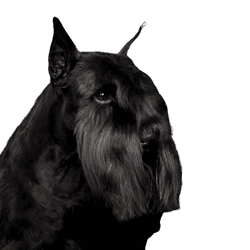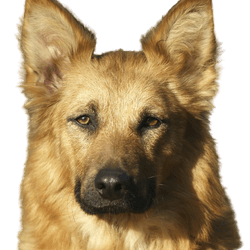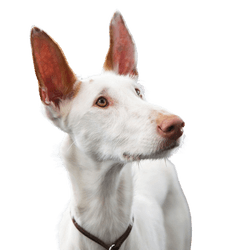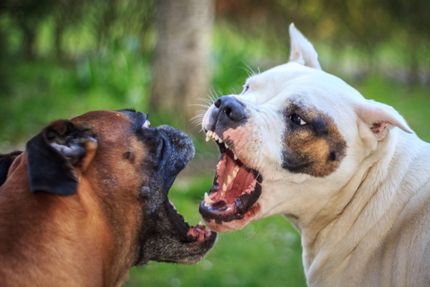
Afghan hound Breed description: Character & Co
Afghan hound
Facts & Origin
Afghan Hound - elegant hunter with a mind of his own
What is the origin of the Afghan Hound?
The Afghan Hound is an extremely old breed that originates from Afghanistan and there specifically from the highlands of the Hindu Kush. As early as about 4000 years before Christ, a dog is said to have been kept in Afghanistan that was very similar to today's breed. In its country of origin, this quadruped was considered a true treasure and was generally held in high esteem. This can be explained by the fact that it was a true survival aid for the nomads with whom it lived in the barren desert and mountain landscapes of the Hindu Kush. The greyhound was used as a hunting dog at that time. He went as a single hunter completely left to himself on the hunt and killed thereby from the mountain goat up to the predatory cat everything what could serve as food for his people. In this way, the independent quadruped was instrumental in the survival of the tribe and was revered for it. The export of the noble dog was punishable by death, nevertheless, around 1890 a British officer succeeded in bringing the first greyhounds from Afghanistan to Great Britain. From the beginning of the twentieth century the race was bred purposefully. One crossed two different strokes, the desert - and the mountain dog, with each other. The puppies from this cross are considered to be the origin of the modern Afghan Hound breed.
What are the breed characteristics of the Afghan Hound?
The Afghan Hound is a breed of dog recognized by the FCI. Assigned to group ten, they belong to the sighthounds, specifically to the long-haired or feathered sighthounds without working test (Section 1, Standard No. 228). The conformation of the animal is that of a medium to large sized sighthound. According to the breed standard, the overall appearance of the four-legged dog should express elegance, dignity and pride, however, the strength and the typical speed of the dog should also be recognizable.




| Alternate Name | Tazi |
| Origin | Afganistan |
| Life expectancy | 12 - 14 years |
| Care requirements | high-maintenance |
| Activity level | average |
| FCI group | Long-haired or fringed Sighthounds |
| AKC group | not recognised |
| KC group | not recognised |
Afghan hound mixes
Attitude, character and temperament of the breed
What are typical character traits of the Afghan Hound?
The Afghan Hound is not a dog for beginners. To train him, it needs a lot of dog experience, consistency and patience with the strong character four-legged friend. The original lone hunter has retained his independence and autonomy and is very reluctant to subordinate. More than basic obedience will not afford you the Afghan, he has a very strong personality and lives this out. Due to his strong hunting and running instinct as well as the fact that he cannot be called off, the greyhound cannot be let off the leash during walks. In the house the proud animals behave quietly, gently and inconspicuously, besides, they are very clean, smell hardly and hair only very little. The Afghan Hound must have the opportunity to run freely and without fences every day, only then he will be a contented companion. At dog clubs there are open spaces that meet the needs of the greyhound. A simple walk on the leash is not enough for the sporting dog to satisfy its urge to move. You should therefore consider carefully whether you can do justice to the demanding animal. The Afghan gets along well with older children and other pets, as long as he is accustomed to them from an early age.
Character
Usage

Health and breeding information
What are typical diseases of the Afghan Hound?
In principle, the Afghan Hound enjoys very good health when kept in a species-appropriate manner with appropriate exercise. However, the following diseases occur frequently in this breed:
- Hip dysplasia
- Cataract
- Afghan myelopathy (complete paralysis of the limbs, hereditary)
Afghan Hound breeding - where, how, what?
If you decide to buy an Afghan Hound, you should start looking for a breeder relatively early. Since the breed is rare in Germany, only about 120 to 200 Afghan Hound puppies are whelped per year. Under the roof of the VDH there is a list of serious breeders, whose contact details you can find there. Over these addresses also announced litters or already born puppies can be inquired. You can visit a good breeder at home, look at the parents and the puppies and ask your questions. Afghan Hound puppies should be chipped, dewormed and vaccinated several times and have pedigree papers, a vaccination certificate and a health certificate.


The Afghan captivates by extremely harmonious proportions and has a slightly springy gait peculiar to the breed. The skull is very narrow, the ears hang down long on the head. The silky coat of the impressive quadruped is usually carried long and occurs in many colors. The sporty dogs reach a speed of up to sixty kilometers per hour in the free run, which they should live out best at sighthound races or coursing.
Appearance and coat of the Afghan Hound
The silky coat of the Afghan Hound is worn long and comes in all colors. Most commonly, the dogs come in cream, silver, and blackish brown. The long coat must not be shorn or trimmed, but it must be combed, brushed, and freed daily from branches and leaves brought in from walks. An Afghan Sighthound with short coat is almost not found in Europe and does not correspond to the breed standard.
How big does an Afghan Hound grow?
An Afghan Hound is an imposing appearance and an impressive sight. Males reach a withers height of 68 to 74 centimeters, bitches are somewhat smaller with 63 to 69 centimeters.
How much does an Afghan Hound weigh?
An ideal weight for the Afghan Hound is not specified in the breed standard. As a rule, however, he will weigh a maximum of 30 kilograms.
How old does an Afghan Hound live?
The average life expectancy of the Afghan Hound is twelve to fourteen years.
| Fur length | long |
| Fur | flat coated |
| Ear shape | Floppy Ear |
| Tail | lang |
| Anatomy | slim, sporty |
| Size ♀ | 63 - 69 cm |
| Weight ♀ | 25 - 30 kg |
| Size ♂ | 68 - 74 cm |
| Weight ♂ | 25 - 30 kg |
| Suitable For | - |
Colors
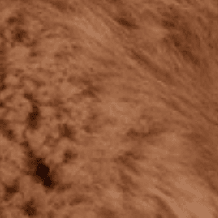



Known Diseases
Hip dysplasia (HD)
The hip dysplasia or hip joint dysplasia of the dog (HD) is a maldevelopment of the hip joint.
Cataract
Cataracts are still one of the most common causes of blindness, even in dogs.
Myelopathy
Degenerative myelopathies of dogs are a series of slowly progressing neurological diseases associated with destruction of the spinal cord. These diseases are associated with slowly progressive movement disorders of the hindquarters.
Other large dogs
Useful Articles
You can find articles that might interest you in the dogbible blog to match your favorite breed.
Visit our magazineto stay up to date on dog trends.
To find out more, view our Privacy Policy
Find here the breed that suits you and find out what character traits it has. Here you can also learn more about the origin, size and weight of your favorite breeds.
Matching your favorite breed, you'll find articles that might interest you on the dogbible dog blog.
Stomach torsion in dogs - recognising signs and providing first aid when gastritis
Annual check-up at the vet: you and your dog should be prepared for this
Female Dog in Heat - what is it?
Tips for Mallorca holidays with dog - these hotels and places you should know



